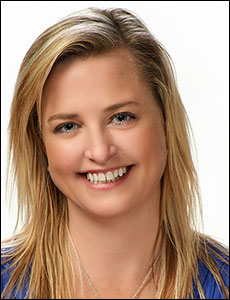Sponsored Content by Hyland
Content is King in Digital World, Integration Helps Manage It

InsurTech generates a lot of buzz in the insurance industry. But many of the emerging technologies are focused on the future, rather than the here and now. Reinventing the customer experience and tapping into new data sources to revolutionize underwriting — these trends are promising, but won’t be realized overnight.
Nonetheless, the growing focus on InsurTech and the future of insurance is driving conversations among insurance executives about ways to modernize existing processes and capture more immediate benefits. Many firms refer to these strategies as digital transformation.
“As carriers think about innovation, they are also examining their present state. Today, they have to address how they manage data and communicate information to their employees, agents, brokers and insureds. For many insurers, it is a Herculean task,” said Charlie Hanna, Director Domestic Insurance Sales, Hyland, creator of OnBase.
Brokers increasingly call for easier access to data and a more collaborative relationship with underwriters. While some carriers have experimented with online agent portals, they’ve typically been limited in their functionality.
“There is a bit of panic among legacy carriers about information and distribution,” Hanna said. “That back-and-forth between carriers and their distribution networks is where a lot of hang-ups exist. The exchange of information with brokers should be seamless in order to aid the underwriting process.”
Existing enterprise content management (ECM) solutions can help, but a new class of true enterprise solutions are emerging that can greatly enhance an organization’s ability to capture, share, control and secure content.
From ECM to Content Services: The Emergence of True Enterprise Solutions

Charlie Hanna, Director Domestic Insurance Sales
Most insurers are familiar with ECM as a document management solution. ECM’s basic capabilities allow organizations to scan paper documents to create digital versions, store that data and retrieve it when needed.
Despite referencing the ‘enterprise’ in its name, ECM systems are often siloed by department, with little integration between claims and underwriting functions and limited ability to communicate directly with other systems or distributors. “Implementing ECM as a departmental solution really misses the vision of what an enterprise-wide system is supposed to be,” said Cara McFarlane, Industry Marketing Manager, Hyland. “Legacy ECM platforms typically act as self-contained data repositories with no ability to share information.”
The growing volume of data available to insurers from both paper and digital channels calls for more access and transparency. This growth is requiring insurers to evaluate new ways to ingest, interrogate, process and secure data so they can leverage it and communicate it to all stakeholders.
“Today, insurers need a broader and more integrated Content Services solution that relies less on paper, enables collaboration both internally and externally, and can automate some workflow processes,” McFarlane said.
Analysts at research and advisory firm Gartner, who regularly assess the competitiveness of players in the technology market, recognized the need for a more integrated solution.
This year, Gartner did away with the term “ECM” altogether. In its place, they created the category of “Content Services Platform Providers” to better describe these next generation solutions and to track and prioritize functionalities and benefits.
Best-in-Class Content Services

Cara McFarlane, Industry Marketing Manager
By Gartner’s definition, Content Services Platforms (CSP) provide an integrated suite of products that can work with diverse content types and provide access to that data to different branches within an organization. They enable the sharing of content, information and data across organizations and between many applications in real-time.
With the ability to integrate with both internal and external programs, CSPs signify a shift from the self-contained data repositories of ECM to open access systems.
But what does a best-in-class Content Services Platform look like, and what advantages does it offer over ECM?
1. Core System Integration
“Back-end integration is the key benefit,” McFarlane said.
A modern CSP can work with carriers’ existing legacy frameworks as well as modern core solutions — like Duck Creek and Guidewire — to cut down on implementation time and begin delivering benefits almost immediately.
“Insurers need solutions that will allow them to incorporate some modern capabilities on the front end while still relying on their legacy platforms to provide the architecture. It’s like renovating an old house so it looks and feels new, but the foundation is the same,” McFarlane said.
“This allows for better user interfaces, more mobility, and some added security features without having to overhaul the back end all at one time.”
2. Enterprise Application Integration
“A true enterprise solution has to cooperate with modern business applications, like the Microsoft suite of products,” Hanna said. “So many people live their lives in Outlook. They have to pull data easily from emails, from Word documents and Excel spreadsheets. And the system has to read and route that data automatically without hiccups.”
Out-of-the-box integrations ensure that system upgrades, whether in the existing application or the CSP, won’t break the functionality. Windows updates, in other words, shouldn’t impact the CSP’s ability to work with Microsoft programs.
3. Real-Time Data Sharing
Internally, core systems share stored data with the Content Services Platform. Different departments then use that platform to share information with each other. An integrated platform connects these functions and provides one place where users can see, work with and share data without requiring special permissions.
“This allows for a user to stay inside of their core business application but still have a 360-degree view of whatever they’re working on at that time, whether it’s processing new business or managing a claim,” Hanna said. “And they don’t have to make a phone call to get access to the information they need. They have it at their fingertips.
4. Security and Compliance
It goes without saying that any modern platform must also come with robust security features that not only protect data, but also keep insurers in compliance.
“You need the ability to set parameters on who can see which pieces of data,” Hanna said.
Information viewable through a customer portal, for example, could be limited to a single claims mediator, and made available only for a limited period of time. File-share tools should require dual-authentication by the recipient to ensure content is reaching the right target.
“A Content Services Platform should also track every action taken with every piece of data so there is a granular audit trail. If an insurer is doing everything right, this is their first legal line of defense if regulators come knocking,” Hanna said.
5. Outbound Communication
A best-in-class CSP should also package raw data for outbound communication. This comes back to automated interrogation and processing of data.
If data can be categorized and routed quickly and accurately, it enables users to easily grab the pieces of information they need to create a customized piece of communication — whether that’s a policy or a general customer letter — and securely send it out to distribution networks via email or a file-sharing tool.
Ahead of the Curve
Hyland has been at the forefront of the digital transformation wave. Its enterprise content services platform, OnBase, has offered all of these features for years and helped to drive the designation of “Content Services” as a new category. The software company’s work in the ECM space earned a recognition from Gartner as a top provider.
“Digital transformation is making its way through the insurance industry. Sophisticated carriers have made the switch from paper to digital, but handling content, data and information that comes from a variety of sources — that is the next hurdle,” Hanna said.
Automated data processing, streamlined workflows and improved communication also translates to big savings and a boost to the bottom line. Because the upfront cost of changing back-end functions often stalls carriers, Hyland offers a value assessment that projects a potential client’s savings over five years if they implement OnBase.
One tier-1 carrier stood to save $35 million over five years by creating workflow efficiencies and reducing paper-based processes.
“And that was a conservative estimate,” Hanna said.
To learn more, visit https://www.onbase.com/en/product#.WgHaRmhSyUk.
This article was produced by the R&I Brand Studio, a unit of the advertising department of Risk & Insurance, in collaboration with Hyland. The editorial staff of Risk & Insurance had no role in its preparation.










